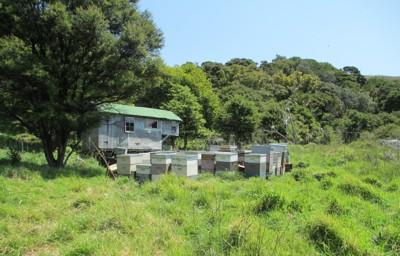Therapeutic value restores hill country
Cultivation of the manuka tree has become a priority on hillsides from Nelson to Waikato.
The manuka tree, a member of the myrtle family, is the basis for the sharply growing industry in the production of therapeutic manuka honey.
The health benefits of the manuka tree (pictured) were introduced to the rest of the world by Captain Cook who dubbed it the tea tree.
The demand for manuka honey has created another cooperative opportunity in the form of share production between farmers and apiarists.
In return for allocating blocks of land for the location of hives, the farmer receives a cut from the revenue derived from the honey produced.
International demand for manuka honey more than matches supply which means that apiarists are in the most coveted position of New Zealand primary exporters in that they are able to set their own premium price.
This is as opposed to accepting the international commodity price.
Because the manuka tree flowers out of synch with other nectar-producing flora, the manuka content of the honey can be defined.
StatisticallyNew Zealand is the world's third-largest exporter of honey by value, behind China and Argentina.
Manuka honey accounts for most of this.
Even so these figures account only for the foodstuffs value of the honey. They do not take into account the branded manuka honey dedicated to medical applications.
The activity around the hives is conferring meanwhile a healthy transfusion to regional joinery firms and transport operators among others.
The joiners who once made trusses, doors and window frames are rapidly converting to making hives while truck operators are busy transferring the hives between locations.
Similarly regional construction firms are building honey pack houses.
Farmers are finding their marginal lands, especially the areas on which sheep cannot be enticed to graze, have become a new source of shared profit..
What could go wrong?
In a word, Australia.
The manuka tree also grows in Australia. It is claimed too that it originated in Australia and found its way to New Zealand as an element of the southerly migration of flora and fauna.
Australia offers economies of cultivation scale and viewed as even more significant is its terrain allowing for the rapid shuttling of hives between flowering districts and pack houses.
Some have seen a comparison between the New Zealand kiwifruit boom and the resulting competition from countries such as Chile.
But such quibbling aside, it is hard not to see a new and diversified frontier opening up for hill country farmers.
There is no investment in things like heavy duty fencing (deer and goat farming.)
Even where manuka plantations need to be established, farmers are able run sheep in the plantation once the trees became established after 3-4 years.
In addition there is now good shelter for the stock.
|From the MscNewsWire reporters' desk | Tuesday 20 December, 2016 |

